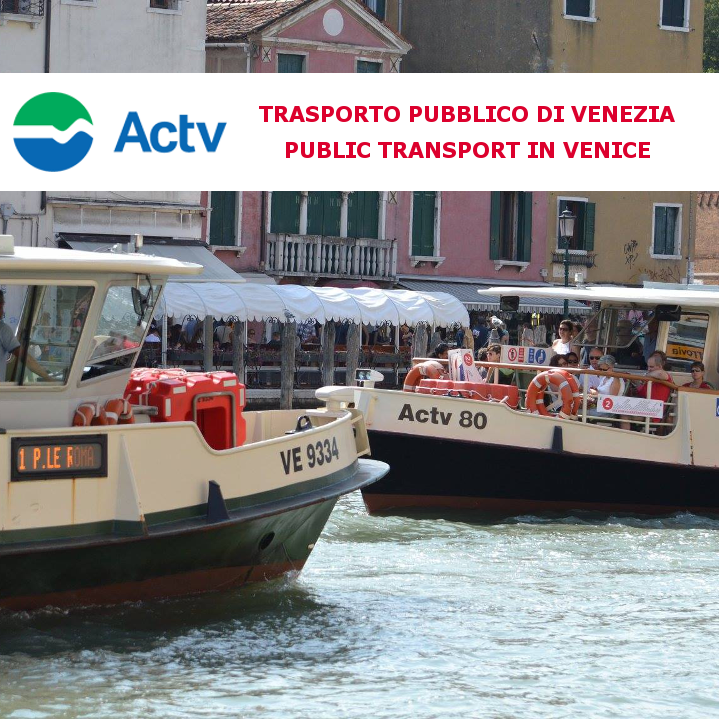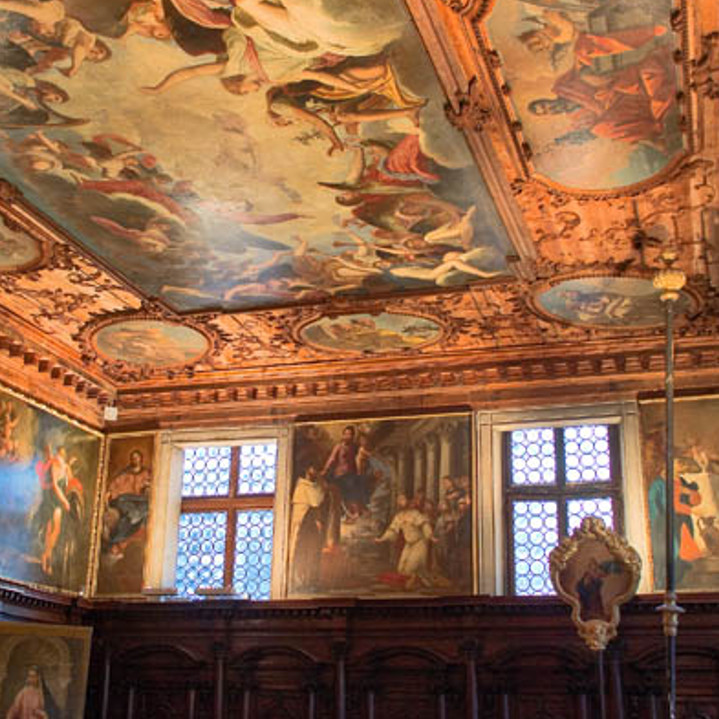You are here
Venice in the summer
SUMMER IN VENICE
 Il bacino dell’Arsenale.
Il bacino dell’Arsenale.
ph. Cinema Barch-in
Summer has begun and Venice is in ferment.
From June to September, the lagoon city is at its best, with the popular festivals that enliven its sestieri such as the Festa de San Piero de Casteo, the fireworks on the water for the Festa del Redentore, the great concerts in St Mark's Square, the cinema on boats under the stars, and the Historical Regatta.
Not to mention the two most emblazoned artistic festivals, the Biennale and the Venice Film Festival. But Venice in summer is also sea and beaches, aperitifs in the open air and bike rides along the lagoon.
Here is a tour of the unmissable Venice festivals in the summer, uncovering the hidden Venice and the islands of the lagoon.
VENETIAN FESTIVALS IN JUNE AND JULY
June sees the return of festivals, processions and open-air celebrations in the heart of the city and the lagoon. The sestiere or island festivals are certainly the most awaited moment of the Venetian summer! Typical cuisine, dances and concerts, religious processions, rowing regattas, fireworks, old-fashioned games such as tombola, charity fishing and lotteries are the indispensable ingredients of evenings spent at a Venetian sagra, a way to immerse oneself in the real life of the city and relive its history and essence.
Around mid-July, Campo San Giacomo da l'Orio in Santa Croce fills up with tables, benches and kiosks for a week or more, and a large and varied musical programme livens up the evenings for the San Giacomo da l'Orio festival, which has been repeated every July since the 1960s. A Venexia se divertimo ancora cussì is the festival's motto: the best bands in the city - and beyond - take turns on the festival stage to entertain those who try their luck at the charity fishing and enjoy traditional dishes, including sarde in saor, meatballs, pasta and beans, bigoi in salsa and grilled meat.
In the second week of July, the village of Malamocco, on the island of Lido di Venezia, celebrates the Festa della Madonna di Marina. The history of this festival has distant origins that are lost in legend: a malamocchino, a certain Felice Dario, is said to have found a log along the shoreline that he took home to make firewood from it. Three times the log disappeared and three times he found it in its original place, until an image of the Virgin Mary appeared from it. This is how the miracle of the Madonna 'del zocco', later called 'Madonna di Marina', has been remembered since around 1300. In addition to the initiatives linked to religious tradition, the Piazza Maggiore and Piazzale di Malamocco host markets, art and craft exhibitions, music, dancing, theatre, fireworks and the final tombola.
But at the height of summer, on the third Sunday in July, Venice is above all home to the traditional Festa del Redentore, which lights up St Mark's basin with fireworks. For Venetians, the Redentore is the summer festival on water par excellence. It has been celebrated every year since July 1577 as thanksgiving for the end of a terrible plague. The heart of the festival has always been on the island of Giudecca, where Venetians pay homage to the Redeemer with a procession to the votive temple designed by Andrea Palladio. On the Notte Famosissima, the eve, people eat, drink and party, waiting for the fireworks, all night long, with music and singing. The next day, the traditional Regatta of the Redeemer takes place, where the protagonists of rowing, champions, youngsters and women compete in several races.
 La Festa del Redentore.
La Festa del Redentore.
ph. Karl Johaentges
THE ISLANDS' FESTIVALS
Have you ever been to Pellestrina? Summer is the best time to visit this island with its beautiful beaches, especially popular for its good fresh fish and peoci (mussels) fishing. Every little village on the island is filled with lights, coloured flags, music and the traditional regattas: there is the Festa di San Pietro at San Pietro in Volta at the end of June; in July the Sagra di Sant'Antonio at Pellestrina, in August the Festa della Madonna dell'Apparizione followed by the traditional Regatta at Pellestrina and the Sagra di Santo Stefano at Portosecco.
At the end of June, the village of San Pietro in Volta celebrates its patron saint: for a week there is the picturesque atmosphere of the traditional village festival, with a lottery, dancing evenings, sports competitions, and a stall of typical dishes, from spaghetti coi peoci to sardines in saor, and the inevitable fried and grilled foods.
At the beginning of July, the appointment is the Sagra di Sant'Antonio in the hamlet of Sant'Antonio a Pellestrina, which celebrates the patron saint with a kiosk open all day to taste the island's fish specialities, while the evenings are enlivened by dancing, concerts and live shows.
On 4 August, the island of Pellestrina commemorates the apparition of the Madonna to little Natalino Scarpa of Pellestrina, an event linked to Venice's victory over the Turks in 1716. This year the whole island is celebrating the 300th anniversary of the miraculous episode. For ten days or so, the famous Festa della Madonna dell'Apparizione takes place, with a series of events: a pilgrimage on foot to the Sanctuary of the Apparition, stalls offering typical island culinary specialities, dancing orchestras and theatre performances. In conjunction with the festival, the traditional Regatta of Pellestrina is held on the first Sunday in August, a much-awaited event that attracts hundreds of rowing enthusiasts to the island.
Another of the island's village festivals is the Sagra di Santo Stefano, the patron saint of Portosecco, which ends on the day of 15 August. The inhabitants hang festoons of coloured flags from their houses and celebrate the saint with tasty fish dishes from the kiosks, concerts, dancing, the traditional tombola and the inevitable rowing regattas. The highlight of the festivities is the procession along the streets of Portosecco to the town square with the wooden statue of St Stephen, carried on the shoulders of the islanders and followed by the procession of the brass band, religious authorities and locals.
On August bank holiday, the island of Torcello celebrates, with great solemnity, the Feast of the Assumption, or the Assumption of the Virgin, to whom the thousand-year-old basilica, known throughout the world for its splendid mosaics, is dedicated. In addition to the events related to the liturgical feast, a concert of sacred music is traditionally held in the basilica of St Mary of the Assumption in the afternoon, and guided tours of the basilica and its surroundings are organised. Generally, on the occasion of the feast, the ascent of the basilica bell tower is opened to the public, and admission to the monumental sites (museum and basilica) is free of charge. After the solemn mass, as every year, the feast ends with a buffet and Venetian aperitif organised by the island's restaurateurs.
 Pellestrina
Pellestrina
ph. @gian_x27 via Instagram
MUSEUMS, CHURCHES AND GARDENS TO (RE) DISCOVER
On the hot and sunny days of July and August, enjoy the cooler hours in the morning or in the early evening to stroll through the calli and campielli (here is a guide to walking in Venice), possibly pushing yourself to discover the less beaten corners. There are museums, churches and gardens - where you can take refuge to escape the heatwave and recover - that remain inexplicably off the classic tourist routes and offer all the tranquillity you need to immerse yourself in the beauty of the city.
There really is an embarrassment of choice of museums to discover in Venice, from the modern art collections at Ca' Pesaro to the Crea contemporary art exhibition spaces at the Giudecca, from the Museum of Byzantine Icons, the only one of its kind in Europe, to antiquities collections such as Palazzo Grimani, which houses a collection of classical sculptures that will make your head spin.
The Venetian churches, then, more than a hundred in number, are all rich in works of art: they range from Tintoretto (at the Madonna dell'Orto, for example) to Paolo Veronese (at San Sebastiano), from Titian (go and see the Basilica dei Frari, you won't regret it) to Giambellino (among others, the Pala di San Zaccaria is one of his masterpieces).
For those in search of shade and refreshment, there are over 100,000 square metres of greenery in the historic centre, including parks and public gardens. For a more unusual and exclusive experience, visit with guided tours for small groups the gardens of ancient palazzos, such as those of Palazzetto Bru Zane and Palazzo Soranzo Cappello, or the vineyards kept within the walls of convents, including the beautiful garden of the Carmelitani Scalzi.

ph. Giorgio Bombieri - Comune di Venezia





